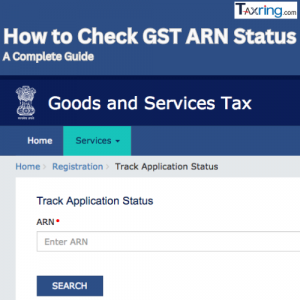 A Complete Guide-1920x700.png)
Understanding Goods and Service Tax (GST): How Does GST Work? A Complete Guide
Introduction to Goods and Service Tax (GST)
Goods and Service Tax (GST) is a unified tax system implemented in India to simplify and streamline the taxation process for goods and services. Launched on July 1, 2017, GST replaced multiple indirect taxes such as VAT, excise duty, and service tax, creating a single, nationwide tax. This system aimed to reduce tax burdens, encourage compliance, and promote a transparent economy.
What is Goods and Service Tax (GST)?
Goods and Service Tax, commonly referred to as GST, is a comprehensive, multi-stage, destination-based tax that is levied on every value addition across the supply chain. GST applies to goods and services alike, charging tax at each stage of production or distribution. Ultimately, the tax is borne by the end consumer, with businesses acting as intermediaries in the collection and remittance process.
History and Evolution of GST
GST has its origins in several countries that implemented similar tax systems to unify indirect taxes. India’s journey toward GST began in 2000, and after years of discussions and legislative efforts, the GST Bill was passed in 2017. The need for GST arose to streamline India’s tax structure, eliminate cascading taxes, and promote ease of doing business. GST is now regarded as one of India’s biggest tax reforms, revolutionizing the way businesses operate and pay taxes.
Importance and Objectives of GST
GST was implemented to achieve several objectives:
1. Uniformity in Taxation: GST provides a single, uniform tax rate across states.
2. Simplification of Compliance: The GST system has unified taxes, making compliance simpler for businesses.
3. Elimination of Cascading Taxes: By removing multiple layers of taxes, GST eliminates tax-on-tax scenarios.
4. Boosting Revenue for Government: Through improved compliance, GST helps increase tax revenue for the government.
How Does GST Work?
GST functions as a value-added tax, where tax is levied at each stage of production and supply but ultimately borne by the consumer. The tax collected from the buyer is partially credited to the seller, ensuring that only the value-added at each stage is taxed.
GST Structure: CGST, SGST, IGST
GST operates on three main components:
- Central Goods and Service Tax (CGST):Levied by the Central Government on intra-state supplies.
- State Goods and Service Tax (SGST): Levied by State Governments on intra-state supplies.
- Integrated Goods and Service Tax (IGST): Levied by the Central Government on inter-state transactions and imports.
This structure allows for efficient tax distribution between the center and states.
Taxable Events under GST
GST is triggered by the occurrence of specific taxable events, primarily the supply of goods or services. The term “supply” covers a range of transactions, including sales, exchanges, transfers, leases, and bartering. The tax is levied based on the value of the supply at each stage, with businesses required to issue invoices as proof of the transaction.
GST Calculation and Invoicing
GST is calculated as a percentage of the transaction value, with rates varying based on the type of goods or services involved. Businesses are required to issue GST-compliant invoices that detail the GST rate, amount, and type of tax applied (CGST, SGST, IGST). Invoicing is a critical compliance requirement, as it ensures transparency and proper tax remittance.
Types of Goods and Service Tax (GST)
To accommodate the federal structure of India, GST is divided into various types, each addressing different aspects of tax collection and allocation.
- Central Goods and Service Tax (CGST)
CGST is the portion of GST collected by the Central Government for intra-state supplies of goods and services. Revenue collected from CGST is used for central welfare and development programs.
2. State Goods and Service Tax (SGST)
SGST is the counterpart to CGST, levied by individual state governments on intra-state transactions. The revenue from SGST goes directly to the state, supporting local infrastructure, health, and education programs.
3.Integrated Goods and Service Tax (IGST)
IGST applies to inter-state transactions and imports. This tax is collected by the Central Government but later distributed between the center and states to ensure equitable revenue sharing.
4.Union Territory Goods and Service Tax (UTGST)
For Union Territories that do not have their own legislature, UTGST is levied in place of SGST. It applies to intra-UT supplies, with revenue supporting the development of Union Territories.
In conclusion
Goods and Service Tax (GST) has transformed India’s indirect taxation by simplifying compliance, reducing tax burdens, and encouraging a unified tax environment. By promoting transparency and reducing the cascading effect, GST has created a streamlined, more predictable system beneficial for both businesses and consumers.
Read also: How to track your GST Payment status? , GST return filing due dates




